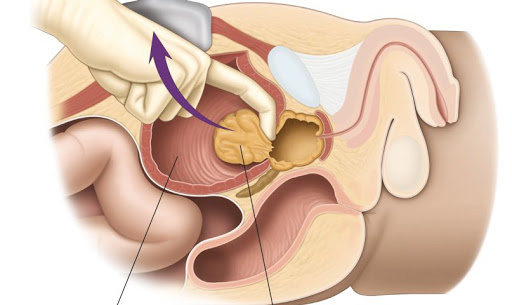Radical removal of the prostate (prostatectomy), regardless of the type of surgery performed, is one of the most common effective ways to combat malignant tumors in the prostate gland (prostate cancer). It should be noted that prostatectomy has a large number of complications, one of which is erectile dysfunction. According to statistics, an impressive percentage of patients develop ED after the surgery.
Common Complications After Prostatectomy ? Prevalence
ED is a common postoperative complication, regardless of type of the malignant formation. Regarding statistics, it is worth noting that the frequency of diagnosis of erectile dysfunction is from 15 to 97%, depending on the age of the patient and an avalanche of other factors. In 2001, a 3-year study was conducted in one of the American clinics. During this time, more than a thousand men who underwent prostate cancer treatment using various methods were examined. At the end of the experiment, the following data on maintaining sexual function after the treatment were obtained:
- radiation therapy ? 78%;
- permanent prostate brachytherapy ? 75%;
- androgen deprivation therapy, also called ADT ? 50%;
- radical prostatectomy ? 30%;
- cryogenic ablation ? 29%.
(Percentage in brackets mean cases when males were able to perform sexual act.) As you can see, prostatectomy was the most detrimental to the erectile function of patients. It is worth noting that, despite the evidence, it is impossible to draw an unambiguous conclusion. This is due to the fact that erectile dysfunction can occur not only as a result of surgical intervention, but also due to urinary urgencies, diarrhea, enuresis, fistulas, and other concomitant disorders.

What Causes Erectile Dysfunction?
Changes in the reproductive system and the occurrence of any malfunctions are detected immediately after the patient complained of a prostate. Conducting instrumental studies, waiting for test results, biopsies cause stress and anxiety, which in turn has an adverse effect on libido and quality of life in general. Over the past 20 years, leading experts from America have carried out a number of studies, thanks to which they found that cancer patients who have experienced malignant tumors in the prostate gland suffer from sexual dysfunction and enuresis. It is impossible to give a cent percent guarantee that everything normalizes after the disease goes to remission.
In 2011, Russian researchers decided to conduct a new experiment, as a result of which it became known that suspicion of the active development of prostate cancer and subsequent examinations, including biopsies, has a detrimental effect on sexual function in more than 80% of patients. Hence it becomes clear that determining the initial level of erectile function obtained during preparation for surgery often turns out to be false. In fact, the figures may be much higher.
Preservation Of An Erection After Surgery
One of the best strategies for preventing erectile dysfunction after radical surgery includes:
- the correct technology for performing prostate prostatectomy with complete preservation of all neurovascular bundles;
- keeping records of physical health, vital indicators of the patient before and after surgery.
It has long been proven that the method of performing radical prostatectomy with intrafascial preservation of nerve bundles has a large number of benefits over the standard interfascial technique. A surgeon should try to ensure the maximum preservation of the prostatic and elevator connective tissue membranes, as well as the fibers of the neurovascular bundle. In addition, hemostasis with the use of clips has many advantages compared to the coagulation method.

In order to maximally prevent the occurrence of erectile dysfunction, it is necessary to responsibly approach the planning of surgical intervention. It is important to observe the period between taking a biopsy and removal of the prostate gland. It is best to ensure at least 30-day interval. These actions should contribute to the following:
- minimization of the risk of the inflammatory processes;
- better process of separation the important fascia from the capsule of the prostate gland (which reduces risk of damage to the erectile function).
Nevertheless, in some cases, even with proper planning of the treatment program and preservation of the nerve bundle, an erection disorder can be diagnosed. This is often linked to involuntary vessel injury during the surgery. As a result, neuropraxia may develop. This is a disorder in which the cavernous nerve is preserved but does not function. Neuropaxia may cause the following disorders:
- a sharp decrease in the frequency of spontaneous erections;
- tissue hypoxia;
- cavernous fibrosis.
In addition to the above, there is a significant decrease in the number of elastic fibers, collagen levels and an increase in fibroblasts. Some patients may notice a significant or insignificant penis shortening associated with the surgery. However, according to a 2011 study published in European Journal of Oncology Nursing, males undergoing radical prostatectomy may not be fully aware that penile length shortening is a possible consequence related to the surgical treatment, so they may not negatively affected by its occurrence.
Erectile Dysfunction Treatment
Usually patients notice the most meaningful recovery 9-12 months after prostatectomy.

In order to restore an erection, an individual postoperative plan of therapy and further prevention of the occurrence of dysfunction should be compiled. PDE5 inhibitors such as Viagra and Cialis may be successfully used.


Leave a Reply